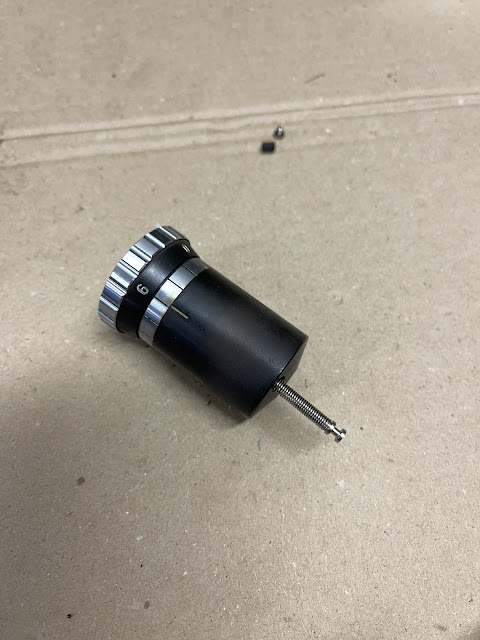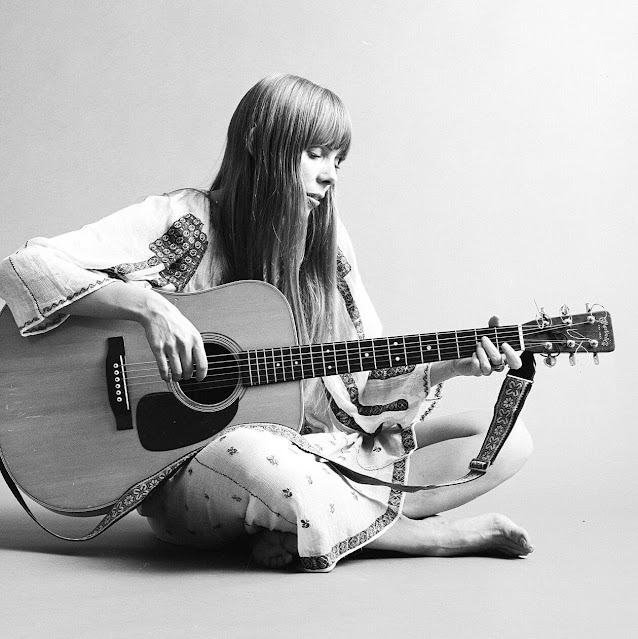Wednesday, May 29, 2024
Tuesday, May 28, 2024
Disk of the Month - Eivind Aarset’s Électronique Noire
Proudly made in Norway 💫
A Who’s Who of Norwegian fantastic musicians collaborating: Nils Petter Molvær and Bugge Wesseltoft among them 💎
A great disk 💫
Thanks to my friend Franco for suggesting it 🙏
Sunday, May 26, 2024
The Power of a Peaceful Thinking Mind 💫
- Master, how do you fight your enemies?
- I'll delete them.
- But how?
- I stop thinking about it... Completely.
An esoteric & musical afternoon 💫
Yesterday I visited for the second time my friend Fabio’s man-cave and, after three years from the first visit since he began playin’n’fiddlin’ with those one-of-a-kind Oleg Rullit’s wide-band, field-coils loudspeakers.
He’s a strong advocate of resonant cabinets where the loudspeakers are mounted to a light wood panel not integral with the actual cabinet, much thicker and bulky, thus resonating at a different frequency than the transducer-mount.
The loudspeakers, reminiscent of a double bass, are the most appealing part of the audio system, but at a more deep inspection, everything is bespoke made and sure the layout of cables, the several, dedicated “ground-boxes”, the huge Western Electric 300A “engraved base” amp and the majestic yet unassuming DaVinci Audio Labs Grandezza passive line-preamp (TVC) - everything plays holistically coherent and - also if the source is a no-name, bespoke CD player and DAC - the final result is nothing less than… unimpressive 😊.
What?
Yes, trying to better explain the feeling: the electronic and electric audio-system footprint (soundprint?) is so neutral that music isn’t “reproduced” but “played”.
Not a subtle difference listening to the sooo natural notes coming with great headroom and awesome dynamics and detailing.
The compression of lesser recordings is always very audible: I could only imagine such a revealing system used in a mastering studio… we sure would be enjoying much better disks!
The piano and double bass sounded just perfect and right in size, harmonics, body/wood and strings and recording venue.
An amazing sense of hic et nunc is present and this absence of any listening fatigue makes music highly enjoyable.
The hard-work needed to assemble and fine tune this music-machine and the sometimes/somewhat obscure and esoteric “Weltanschauung” (Lux Sapienti) our host and landlord intermittently showed doesn’t distract the listener to the real meaning of such a behemoth of a system: playing music.
My sincere compliments to Fabio for the so enjoyable experience and the overall beauty coming from - not by chance - artisanal handicrafts, pointing this out as opposed to the vast majority of the - definitely - poser hyper-€$£¥ audio systems, so often an intrinsic power-show up of the owner’s ego
Sure not the case of this audio installation 💫🥇💎💫
Kudos, Fabio and thanks for hosting.
Reel to reel facts - US vs. Germany 😏
After WW II, John "Jack" T. Mullin, who was in the US Army Signal Corp, brought back to the US, 2 German Magnetaphon reel-to-reel magnetic tape recorders. Mullin took the 2 Magnetophons apart and shipped them back to the US in 18 boxes to comply with US war souvenir size requirements. Also included were 50 rolls of German magnetic tape.
In late 1945 as Mullin was returning from France, he shared the Magnetophon information with a friend, Col Richard Ranger. Ranger decided to go to Germany, research the information and build an American version of the Magnetophon.
When Mullin arrived at his home in San Francisco he was happy to find the 18 boxes had arrived safely. He decided to go to work with a friend William A. Palmer who had founded W.A. Palmer & Co., a film production company in San Francisco in 1936.
After tweaking the electronics and converting to US tubes the Magnetophons were used to support Palmer's film business. To their knowledge, this was the first time magnetic tape was used to record motion picture sound with the subsequent transfer to film.
https://museumofmagneticsoundrecording.org/ManufacturersAmpex.html
Friday, May 24, 2024
The Studietto is over…
The 15 years long adventure, lovingly and aptly nicknamed “Studietto” (a little studio, considering the size) is coming to its natural end: everything will be cleverly crated and safely put on temporary storage.
This cute, cosy, over crowded place has been my buen retiro, my safe harbor, where I played and listened to music, where I read and wrote, where I met people - mostly friends - from all over the world (USA, France, Japan, Lithuania, Philippines, Australia, England, South Africa, Vietnam, Germany, UK, Russia, Bulgaria, Austria, China, Hong Kong, Ukraina, Taiwan, Spain, Portugal, Norway, Denmark, The Netherlands… and Italy, of course 😀)
The old building where the place is will be shortly sold and it’s wiser don’t get unprepared to the new property questionable priorities: sadly the actual place will be transformed in a garage… I’ll soon be a victim of gentrification 😢😵💫😢
A new Studio is under restoration but getting (properly reproduced 😏) music, again will be a matter of some months…
I’m both sad - (VERY) sad - and excited… that’s life: a continuum of ups and downs, bends and straight lines… happiness and sadness.
All for the love of music.
💫🍀💫
Wednesday, May 22, 2024
Tuesday, May 21, 2024
Joni’s stolen guitar 😢
Joni Mitchell never really got over the loss of her “dear one,” a 1956 D-28 that had been gifted to her after surviving an explosion while it was on a tour of duty in Vietnam with a Marine Captain. “When they cleared the wreckage, all that survived was this guitar,” Mitchell told Acoustic Guitar magazine in 1996. Sometime before the release of her 1974 album, Court and Spark, it was stolen from a baggage carousel in Maui, Hawaii.
By that time, however, it had already underpinned Mitchell’s rise to pop-folk prominence, featuring on earlier works including “Big Yellow Taxi,” a creative peak from her 1970 album, Ladies of the Canyon. Written during a stay in Hawaii – and inspired by seeing far-off mountains spreading out from beneath the parking lot of her hotel – it fizzes with the playful melodic attitude of her foundational writing.
Monday, May 20, 2024
Capitol Records in LA 💫
The Secret of that Capitol Studios Sound.
One of the Les Paul-designed echo chambers under the Capitol Records ...
In 1955, Les Paul, one of America's foremost recording experts, was brought in to consult on the design of Capitol's new recording studio. In addition to creating a world-class, acoustically tuned environment for recording and mixing the hits of the day, Paul helped create eight concrete echo chambers, built 30 Roughly trapezoidal with no parallel surfaces, each of Capitol's chambers has slightly different dimensions tailored to produce different reverb characteristics and decay times, up to five seconds long in 1955.











































































.jpg)



.jpg)












































